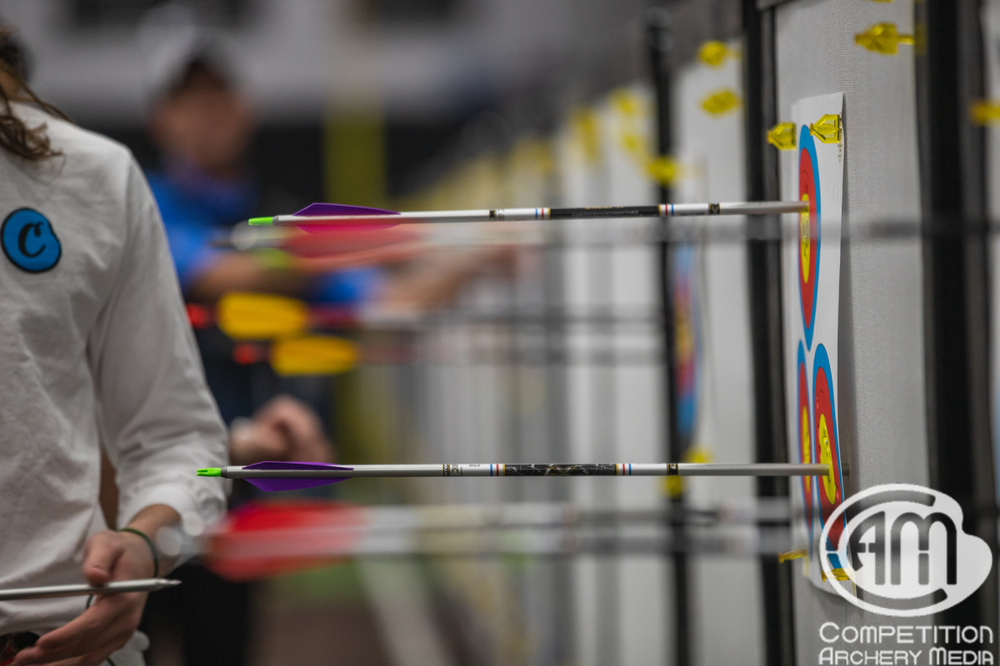The Lancaster Archery Classic is the largest archery competition on the East Coast with a few aspects that set it apart from other competitions of its kind. One piece of this tournament that differs from others is the unique opportunity for archers to sit in on seminars for free.
These seminars are led by manufacturers, professional archers, and leaders in the archery industry to provide knowledge, insight, and tips that can help others improve their success in the sport.
Randy Groff of TAC Vanes led one seminar to discuss why these vanes are popular, why an archer should switch to TAC Vanes, and how to fletch them.
About TAC Vanes
TAC Vanes have an incredible impact on archery as more professionals have moved to this vane followed by many others in the archery community. Two reasons behind the rising interest in this vane are the stiffness and stability TAC Vanes provide.
TAC Vanes are designed so an arrow immediately spins after leaving the riser. Most other vanes take a couple of seconds after leaving the riser, before fully starting to spin downrange. The advantage of TAC Vanes’ performance is they don’t let environmental changes influence the arrow as it leaves the bow, which creates a tighter arrow group in the target.
Another advantage of TAC Vanes is they are made of a proprietary material that creates a tight bond when glued on an arrow correctly. This bond ensures these vanes will not fall off during flight or be torn during use.
The best instruction guide to learn how to fletch TAC Vanes can be found on their website here. For more information on which TAC Vanes to choose for your setup, their Vane Comparison Table can be found here. In this seminar, however, Groff went over a couple of tips that went further than what’s mentioned on their website.
Fletching TAC Vanes with Randy Groff

Fletching Jig Tips
According to Groff, the best jigs to use are any helical style fletching jig. His top two choices would be a Bitzenburger Fletching Jig with a helical clamp or the Last Chance Archery Vane Master Pro Fletching Jig.
If you are using a Bitzenburger Jig, every adjustment to the jig matters. Groff mentioned that if you have trouble getting adhesion in 5 seconds, then your jig may need to be adjusted.
To do this, use an Allen key to loosen the knobs on the side of the jig. Make sure your desired clamp with a vane in it and your arrow are in the fletching jig. Turn the knobs until the vane has full contact with the arrow from top to bottom. After ensuring this, try to wiggle the clamp while it is still on the jig. If there is movement in the clamp, it still needs to be adjusted.

Groff’s tip for the LCA Vane Master Pro is when you press the vane down on the shaft, press the two ends of the clamp to the arrow with your index fingers and press the arrow into the vane with your thumbs. This will help the glue spread along the arrow, creating a tight adhesion.
A question was asked in the seminar if a three-fletching jig would be an appropriate choice for TAC Vanes. Groff had said that shimming would most likely be required for those jigs to allow the vanes to seat properly in the clamps.
Groff said that these jigs would not be ideal since, after priming, you immediately have to add glue to the vane, and then place the vane on the shaft. If you have to prime and glue three times before ever placing a vane on the shaft, that could inhibit the vanes’ adhesion once placed on the arrow.
Priming and Gluing Tips
Groff said it is important to use both the TAC Glue and TAC Primer Pen. The primer preps the vane base to promote adhesion to the arrow shaft. Soaking the vane in the TAC Primer will not help the process. Instead, dab the primer pen on a paper towel to tell if the liquid is coming out of the felt tip. Once the primer is ready to go, make a gentle swipe down the base of the vane.
To properly apply the glue, make a thin bead along the base of the vane. Refrain from smearing the glue, because your vane may not bond correctly as a result. If you accidentally add too much glue, Groff recommends throwing the vane away and starting with a new one.
Arrow Wrap Tips

The last tips Groff offered focused on arrow wraps. The TAC Arrow Wraps ensure that the vanes will bond to the shaft. Wraps also eliminate the need to scrape an arrow to remove glue and debris before re-fletching.
To prepare an arrow to be re-fletched after using wraps, it is as easy as stripping the vanes off of the wrap, taking the wrap off of the arrow, and cleaning the shaft with acetone followed by tap water.
Cleaning the wraps isn’t necessary. If you feel the need to, you can use Windex. Acetone will strip the coloring and branding away from the wrap, so Windex keeps the original look of the wrap intact.
Groff recommended that archers who are just learning to fletch their own arrows use a wrap when fletching aluminum arrows. The wrap will ensure that the vane will have something to grip. More experienced fletchers should take a piece of sandpaper and scuff the top of the shaft, so the vane will have more to cling to, eliminating the need for a wrap.


